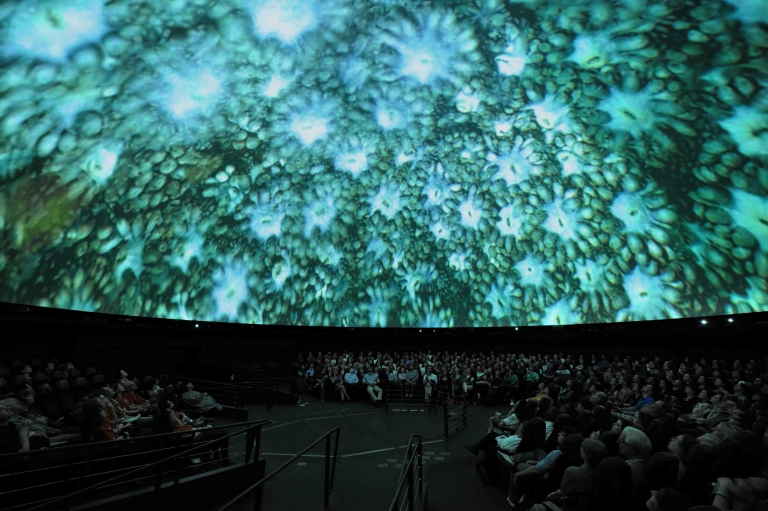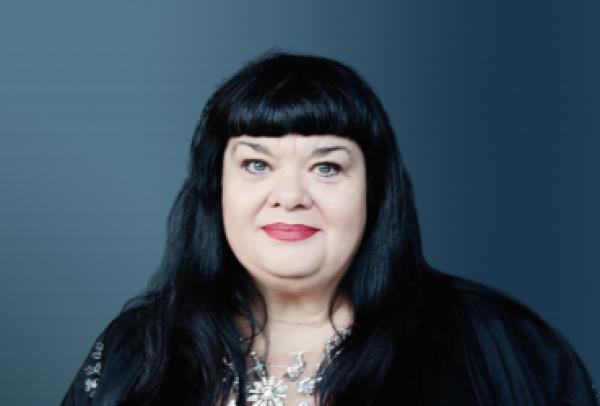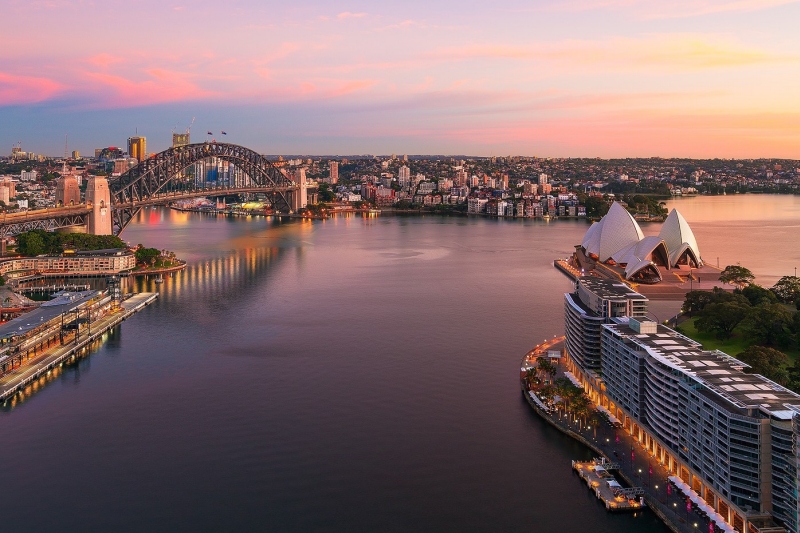
Brave New (Virtual) World
Lynette Wallworth has the distinction of having been able to convince some of world’s most powerful individuals to bed down on a bean bag, look up into the dark void and just watch and listen for 25 minutes.
That was in 2014 when Wallworth screened her fulldome film Coral: Rekindling Venus at the World Economic Forum summer event in China, a gathering that attracts the kingpins of international politics, finance, science and business. An inflatable dome had been purpose built for the occasion.
“This was a non-narrated, completely immersive work, which told you nothing about species loss or climate change,” says Wallworth. “It gave you no facts and figures. It gave you no statistics. It was completely in the vein of all of my artworks. An experience of being immersed, of basically lying on the sea floor looking up at a coral reef at night.”
As soon as the lights went down and the dome filled with an underwater world full of luminous coral and sea creatures swimming above them, the audience was hooked.
“Within a day, there were queues lining up for 40 minutes, to get into the work,” she says.
Despite the lack of commentary the images were so powerful that the message was clear: protect this beautiful thing. The film’s impact on the audience was duly noted in the closing remarks.
Interactive tech for a global audience

Lynette Wallsworth, artist
Over 20 years, Wallworth has earned an international reputation for her work with interactive technologies, including augmented and virtual reality (VR), and her ability to immerse the viewer in the worlds she creates. For Wallworth, audience connection lies at the heart of her art.
Using scanning microscopy images and astronomical photography, Wallworth produced her breakthrough installation Hold: Vessel 1 in 2001 for the opening of the Australia Centre for the Moving Image in Melbourne. In it, viewers had to ‘catch’ falling beams of light – fish, coral and marine plants – in a glass bowl as they stood in a dark room.
“If the viewer wasn’t there the work was not complete because the projections would fall away into a grated floor,” she says.
Once finished, the viewer handed the bowl on to another person. “It was an ordinary, everyday gesture, but in that environment it took on a kind of sacred sensation, the sacredness of an offering,” says Wallworth.
“Conceptually for me it was very complete. You were holding a fragile environment, a coral reef, in a glass bowl. If you dropped it you would shatter it. You were formally in a position of having to hand it on to the person coming after you.”
Pushing the boundaries of technology
While Wallworth has worked consistently with technology during her career, she has no formal training in it. A visual arts graduate with a post graduate diploma in photography, she learns as she goes, admitting that that has its challenges. Somehow, though, she manages to imbue this often impersonal medium with warmth and emotion.
“It is extremely nerve wracking,” she says. “Theoretically you know what should be possible but until you’ve actually done it you really don’t know if it’s going to work. You really are standing on a cliff. You have to hold your nerve when you encounter, and you always encounter, the problems that you didn’t anticipate and embrace them. It really does require a mental toughness.”
That toughness comes in handy on projects such as Collisions, filmed in the Western Desert, 2,000 kilometres northeast of Perth, Western Australia, using a combination of 360-degree film, 3D vision technology and computer generated imagery. Commissioned by the World Economic Forum, Collisions is a stunning VR journey to the land of Indigenous elder Nyarri Nyarri Morgan – in which he recounts his first encounter with western culture, seeing an atomic test.
Collisions premiered at the 2016 Sundance Film festival to rapturous applause. Following its showing at the World Economic Forum in Davos, it was screened at the United Nations Comprehensive Test Ban Treaty meeting in Vienna and the UN General Assembly meeting in New York, the Climate Action Summit in Washington, and the Timbie Forum (on disarmament) at the US State Department, and Wallworth was named by Foreign Policy Magazine as one the 100 Leading Global Thinkers of the year. In 2017, Collisions won the Emmy for Outstanding New Approaches – Documentary at the 38th Annual News and Documentary Emmy Awards.
The Australian artistic approach

A vessel designed by Lynette Wallsworth
Wallworth believes her Australianness plays a role in the commissions she receives, as well as the work she conceives. “We have an inclination to be able to see the other perspective,” she says. “There’s a humbleness I hope. We don’t put ourselves up above other people. We don’t dominate the world. We don’t carry that in our bones. That’s a very helpful way to be.”
Her work remains strongly linked to the Australian landscape.
“We are from this huge country where the natural world dominates our thinking and I can see that reflected in my work.”
Wallworth credits her grandmother with kick-starting her cinematic journey. During school holidays, her grandmother would take Wallworth to her cleaning job at the Capitol Theatre in Tamworth, a town in northern New South Wales. “She would go into the theatre and clean it before the next screening, so that meant that we saw the end of a lot of films, but never the beginning,” she says. “I have to credit her with setting me on the course of this non-linear narrative. It was so extraordinary to sneak into a cinema when everyone was still watching and see these intense and often powerful moments of a film drawing to a close and not know what had brought you to them. They are seared in my memory.”
Wallworth now creates extraordinary experiences, using the latest emerging technologies to generate intense, powerful and unforgettable moments for audiences worldwide.
Author: Maryanne Blacker
First published on australiaunlimited.com

















